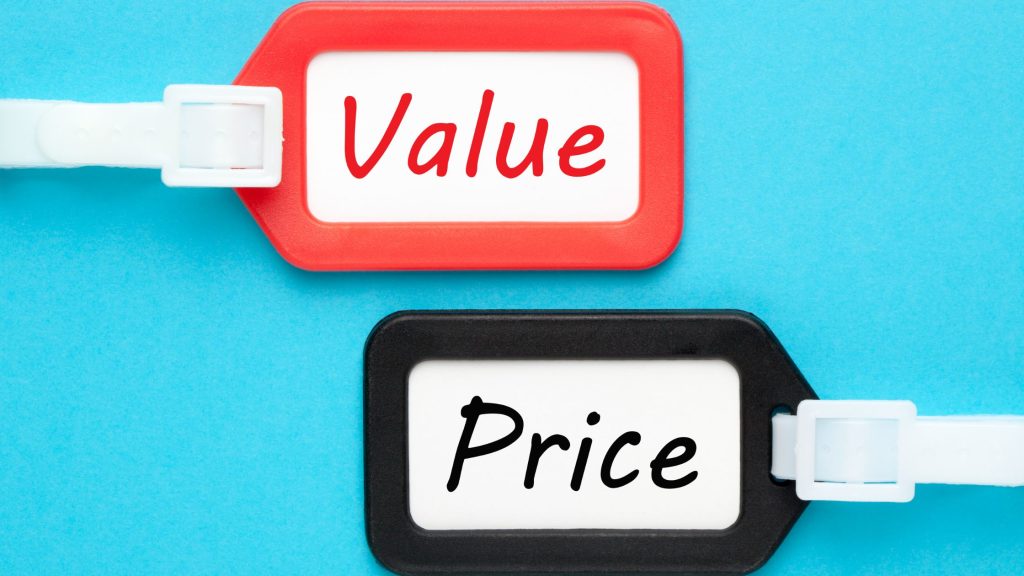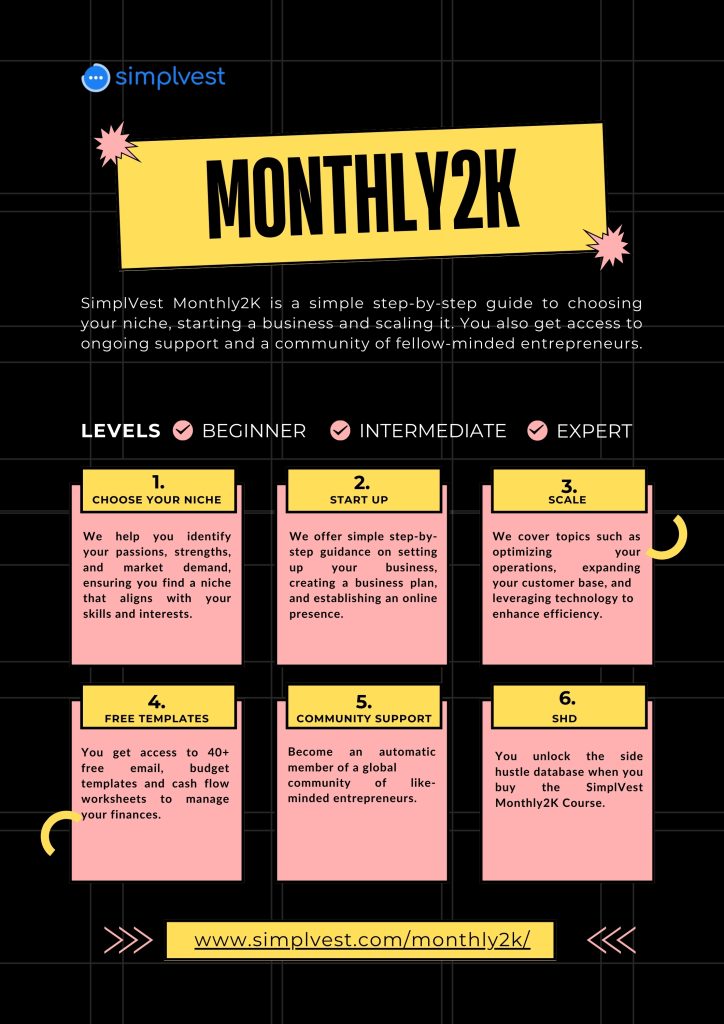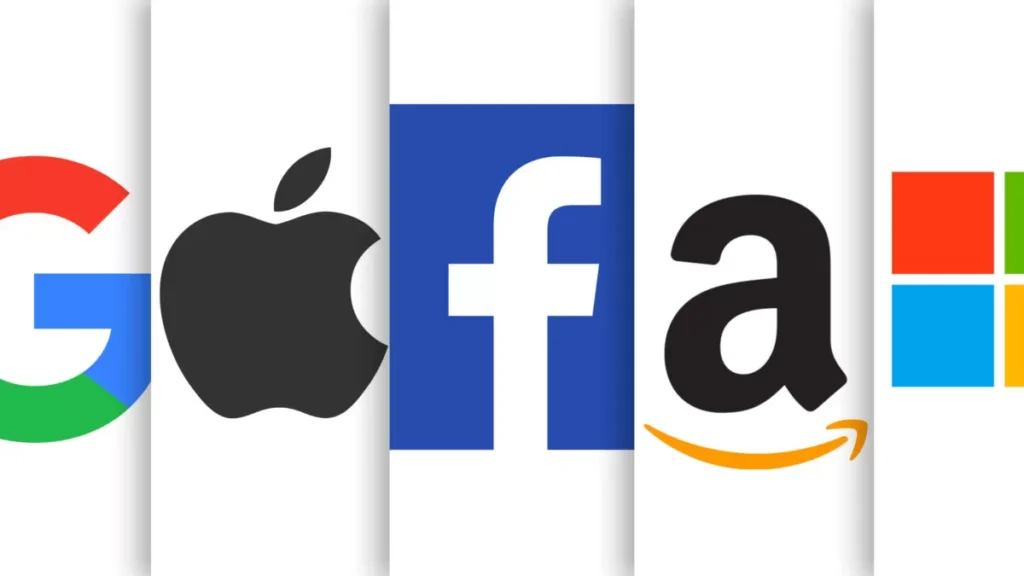Most entrepreneurs get so caught up in perfecting their offering that they completely neglect the money-making side of things. Having a great product or service isn’t enough, you need to know how to make what its worth. This SimplVest guide will walk you through seven actionable and proven business monetization strategies that successful businesses use to maximize their revenue.
The goal is to help stop leaving money on the table and start building a business that pays you what you’re worth.

1. Smart Pricing Strategies
Here’s the thing about pricing: most people get it completely backwards. They look at what it costs to make and market their product, add a percentage profit margin and then call it a day. That’s cost-plus pricing and it’s essentially leaving money on the table.
a. Value-based pricing is where the magic happens. Instead of asking yourself “What does this cost me?” ask “What’s this worth to my customer?” To give a world-famous example, Adobe figured this out when they moved from selling their Creative Suite for $2,600 once to charging $52/month forever. They offered the same software, but at a completely different value proposition. Luxury goods businesses are known for using this strategy.
Think about this strategy for a second, if your service saves a client $10,000 annually, charging $2,000 isn’t expensive, it’s a steal. So better start quantifying the value you deliver rather than mere mark-up, then price accordingly.
With this approach, you align your prices with the benefits your business provide to your clients. This
way, you can justify premium pricing for unique or high-quality offerings or services.
The following businesses and services can deploy value-based pricing. Freelancers – Online Beauty Products Creator – Crafts Makers – Specialty Bakeries – Personal Trainers – Luxury Goods Rentals – Personal Chef – Social Media Managers – 3D Printing – Commercial Cleaning Services – Hair Stylists
b. Tiered pricing is your friend here too. Ever notice how streaming services offer basic, premium and family plans? They’re not just being nice, they’re instead capturing different segments of the market. Your bargain hunters get the basic plan, your power users upgrade to premium and your high-value customers go enterprise.
By providing flexible options, (generally between three and five) at different pricing options a tiered pricing strategy allows you to cater to diverse segments of customers. The following businesses and services can deploy tiered pricing: Online Tutors – Subscription Box Services – Photographers – B & B Services – Customized Meal Prep Services – SAAS
c. Dynamic pricing isn’t just for Uber. If you’re in a seasonal business, consulting, or any service where demand fluctuates, why charge the same rate year-round? This adaptable strategy allows businesses to maximize revenue during peak periods while attracting more customers during slower times, leading to better overall profitability.
The following businesses can deploy dynamic pricing as part of their business monetization strategies. It allows them to adjust prices based on
peak hours or high-demand events like festivals. Food Trucks – Event Planners – Vacation Rentals – AirBnB – Hosting International Students
2. Build a Subscription Money Machine
Subscriptions are beautiful because they solve the feast-or-famine cycle that kills so many businesses. Instead of constantly hunting for new customers, you build a base of recurring revenue that grows month over month. The key is thinking beyond traditional subscription models. Dollar Shave Club didn’t invent razors, they just made buying them automatic. Peloton combined a one-time hardware purchase with ongoing content subscriptions. The question is: what can you make recurring in your business?
Consider these subscription models:
- Fixed recurring subscription: Same amount, same schedule (Netflix, Spotify). This monetization strategy is perfect for businesses with consistent delivery costs and value like Meal Prep Service, Plant Care Service, Pet/Beauty Supply Box
- Usage-based subscription: Pay for what you use (AWS, most SaaS tools). This is Ideal for variable consumption services like Freelance Services, Virtual Assistant, Rentals, 3D Printing and Car Detailing Services
- Tiered subscriptions: Multiple levels with increasing value (Slack, Zoom). This model is suitable for scalable service offerings like Web Development Support, Photography Services, Social Media Management, Business Consulting, Cleaning Services
- Freemium subscription: Free basic version, paid premium features (Dropbox, Canva). This subscription model is great for digital products and services including Online Course Platform, Directories, Recipe Planning App, Language Learning Tool.
The secret sauce to subscription models is to focus obsessively on onboarding. If customers don’t see value in the first week, they’ll churn in the first month. Make their first experience so good they can’t imagine going back to how things were before.
3. Upselling and Cross-Selling: The Art of Selling More to Existing Customers
Here’s a stat that’ll blow your mind: it costs 5-25 times more to acquire a new customer than to sell to an existing one. Yet most businesses spend 90% of their energy chasing new customers while ignoring the goldmine sitting in their existing customer base.
Upselling is about offering a better version of what they already bought. Think Apple convincing you to upgrade your storage or McDonald’s asking if you want to make that a large. Cross-selling, on the other hand, is suggesting complementary products that can enhance the customer’s satisfaction, like Amazon’s “frequently bought together” recommendations.
The key is timing and relevance. Don’t try to sell someone a premium service on day one. Wait until they’ve experienced value from their initial purchase, then show them how the upgrade will solve their next problem. Use data to your advantage here. Track what your customers buy, when they buy it and what problems they still have. Then create logical next steps for them. If you sell marketing software, maybe your customers need training. If you’re a fitness coach, perhaps they need nutrition guidance too.
Strategies for better pitches:
The way you present your upsell or cross-sell offer determines whether customers perceive it as
valuable or pushy. Clear, strategic communication is key. To pitch an upsell or cross-sell,
- Show the added value by emphasizing how the offer or service solves problem or enhances the purchase.
- Leverage testimonials: Use customer reviews or examples to build credibility.
- Choose the right moment: Offer upgrades or add-ons at checkout or during post-purchase followups.
- Personalize messaging: Use customer data to tailor your offers.
- Train staff: Equip customer-facing employees with scripts and strategies for effective selling.
- Articulate the benefits: Use benefit-focused messaging
Businesses that can successfuly deploy these techniques include Bakeries and confectionaries, Personal
Trainers, Coaching and Consultation Service, Car Wash Service, Equipment and Luxury Items Rentals,
Photography Business, 3D Printing, Home Cleaning Service, Hair Salons, Tattoo Parlours, Craft Tutors

4. Affiliate Marketing – Let Others Sell for You
Affiliate marketing is like having a sales team you only pay when they produce results. The challenge isn’t setting up the program, it’s attracting affiliates who actually move the needle. For instance, Amazon Associates works because Amazon makes it easy and profitable. They provide tracking, marketing materials and reliable payments. But here’s what most businesses miss: you need to actively recruit and support your affiliates.
Look for partners who already reach your target audience. If you sell productivity software, partner with productivity bloggers and YouTubers. If you’re in fitness, work with personal trainers and gym owners. These people already have trust with your potential customers. Don’t just set up a program and hope people find it. Actively reach out to potential affiliates. Offer them exclusive content, higher commission rates, or early access to new products. Treat them like the business partners they are, not just another marketing channel.
All service-based businesses can successfully leverage affiliate programs as part of their business monetization strategies . These include Travel Agents, Influencers, Ebook Publishers, Mobile App Developers, Social Media Managers, Transcriptionists, etc.
5. Advertising & Sponsorships – Turn Your Audience into Revenue
If you’ve built an audience whether through a blog, podcast, email list, or social media following, you’re sitting on a monetization goldmine. The key is doing it without alienating your audience. Morning Brew nailed this by making their sponsored content feel native to their newsletter. Their ads don’t feel like interruptions – they feel like recommendations from a friend. That’s the goal.
Start by understanding your audience deeply. What brands do they already love? What problems do they have that aligned companies could solve? Then approach those companies with a clear value proposition: “I have 10,000 marketing professionals who read my newsletter religiously. Here’s how we can introduce them to your tool.”
Remember, your audience’s trust is your most valuable asset. One bad sponsor can damage relationships you’ve spent years building. Be selective, be authentic, and always disclose partnerships clearly. Content-driven businesses and side hustles can incorporate advertising and sponsorship models: Bloggers, Podcasters, YouTubers, TikTokers, Podcasters, E-commerce Stores, Mobile App Developers.
6. Licensing & Franchising – Scale Without Capital
Want to grow your business without the headache of managing multiple locations or the capital requirements of expansion? Licensing and franchising let you clone your success through other people’s investments.
Licensing works when you have intellectual property worth protecting and sharing. Maybe you’ve developed a unique process, created proprietary software, or have a recognizable brand. Instead of trying to scale everything yourself, license it to others who can execute in their markets. Franchising is licensing on steroids. McDonald’s doesn’t own most of its restaurants, its franchisees do. But McDonald’s controls the systems, training and standards. They get ongoing royalties while franchisees handle the day-to-day operations.
To use either of these two business monetization strategies, you will need legal support. Both strategies require ongoing attention to legal compliance and relationship management. Regular communication with your licensees and franchisees will help you identify opportunities for improvement and potential issues before they escalate. You can also consider establishing regular review periods to assess performance and adjust strategies as needed.
The beauty of both models is that success scales exponentially. Each new licensee or franchisee becomes a profit centre with minimal additional investment from you. These businesses can license and franchise their work and products: Artists and Designers, Content Creators, Software Developers, Craft Breweries, Educational Content Creators, Craftsmakers, etc.
7. Digital Products – Create Once, Sell Forever
Digital products are the closest thing to passive income you’ll find in business. Create a course, write an ebook, build a template, or develop software, then sell it infinitely without additional production costs. They offer remarkable scalability, minimal distribution costs, and the potential to reach customers worldwide. When executed properly, digital products can create substantial passive income streams for you while showcasing your expertise.
The key is solving a specific problem for a specific audience. Don’t create a generic “how to succeed in business” course. Create “How SaaS Companies Can Reduce Churn by 40% in 90 Days” for SaaS founders struggling with retention.
Gumroad and Teachable have made it easier than ever to create and distribute digital products. The barrier to entry is low, but the opportunity is massive. Your expertise, packaged correctly, could become a six-figure revenue stream. All Freelancers, SAAS, Coaches, Consultants, Tutors, Ebook Creators, Web and App Developers, Tech Professionals, Handcrafts makers can create and sell digital products to expand their incomes.
Making It Work for Your Business
Here’s the reality: not every one of these business monetization strategies will work for every business. Start with one that aligns best with your current situation and customer base. Master it, then layer on others. If you’re just starting out, focus on pricing and upselling, they’ll give you the biggest immediate impact. And if you have an established customer base, explore subscriptions and affiliate programs. If you’ve built an audience, then almost certainly dive into advertising and digital products.
The companies winning today aren’t necessarily the ones with the best products, they’re the ones with the best business monetization strategies. Which one will you implement first?

Ready to turn your business dreams into reality?
Our SIMPLVEST MONTHLY2K Course gives you the step-by-step blueprint to start and grow a business. You will learn in 10 actional modules, how to validate ideas, launch efficiently and scale smartly just like the pros. The first two modules are free, so you can start risk-free. When you buy it, you get additional materials, including a database of 100+ side hustles to choose from, access to a community of entrepreneurs and marketing templates, all for free.












